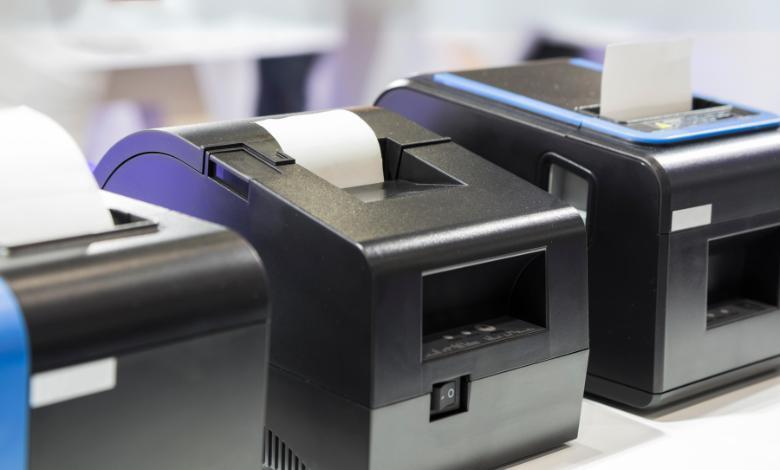 If you’ve ever wondered how the sleek, compact thermal printer at your local grocery store produces those neat, crisp receipts, you’re in the right place. In this article, we’ll unravel the fascinating technology behind thermal printers, exploring their inner workings and the benefits they offer. Here’s a sneak peek at How Does A Thermal Printer Work.
If you’ve ever wondered how the sleek, compact thermal printer at your local grocery store produces those neat, crisp receipts, you’re in the right place. In this article, we’ll unravel the fascinating technology behind thermal printers, exploring their inner workings and the benefits they offer. Here’s a sneak peek at How Does A Thermal Printer Work.
-
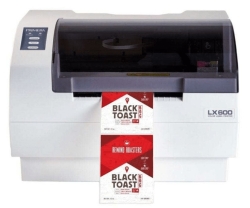 Primera LX600 Color Label Printer SKU: LX600$1,995.00
Primera LX600 Color Label Printer SKU: LX600$1,995.00
FREE SHIPPING over $199*
Orders before 12PM EST usually Ship Same Business Day - Product on sale
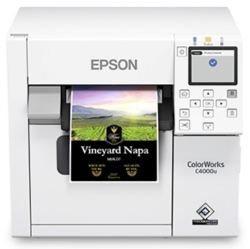 Epson C4000/CW-C4000 ColorWorks Inkjet Label Printer (Gloss) SKU: C31CK03A9991Original price was: $2,399.00.$2,199.00Current price is: $2,199.00.
Epson C4000/CW-C4000 ColorWorks Inkjet Label Printer (Gloss) SKU: C31CK03A9991Original price was: $2,399.00.$2,199.00Current price is: $2,199.00.
FREE SHIPPING over $199*
Orders before 12PM EST usually Ship Same Business Day -
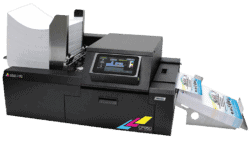 Afinia CP950 Envelope Packaging and Box Color Label Printer SKU: 35256$18,995.00
Afinia CP950 Envelope Packaging and Box Color Label Printer SKU: 35256$18,995.00
FREE SHIPPING over $199*
Orders before 12PM EST usually Ship Same Business Day
What is a Thermal Printer?
Let’s begin with the basics of thermal printers before diving into their mechanics. In thermal printers, heat is applied to specially coated thermal paper or labels to generate text and images. Unlike traditional inkjet or laser printers, which use ink or toner to create images, thermal printers use a completely different approach based on the principles of thermal transfer or direct thermal printing.
What are the Benefits of a Thermal Label Printer?
Various industries have embraced thermal printers due to their many advantages. Here are some benefits of thermal label printers in case you’re not familiar with them:
- High-Quality Printing: Thermal printers produce sharp and clear prints with no smudging or bleeding, ensuring that your labels and receipts look professional.
- Speed: High-speed applications like retail checkout counters are ideal for them due to their fast speed.
- Low Maintenance: Thermal printers require fewer moving parts and don’t need toner or ink replaced, so they require less maintenance.
- Durability: Thermal prints can tolerate harsh weather conditions, including moisture and UV rays, without fading.
- Cost-Efficiency: Over time, thermal printing can be more cost-effective than traditional printing methods due to lower operational costs.
Let’s examine the two primary methods of thermal printing: direct thermal and thermal transfer printing, now that we’ve highlighted some of the advantages.
-
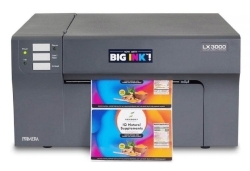 Primera LX3000 Color Label Printer with Big Ink, Pigment Ink SKU: LX3000-pigment$3,195.00
Primera LX3000 Color Label Printer with Big Ink, Pigment Ink SKU: LX3000-pigment$3,195.00
FREE SHIPPING over $199*
Orders before 12PM EST usually Ship Same Business Day - Product on sale
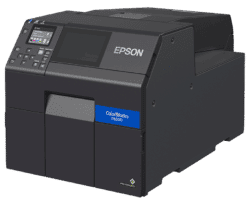 Epson ColorWorks CW-C6000A Matte Color Inkjet Label Printer with Auto Cutter SKU: C31CH76A9981Original price was: $2,899.00.$2,699.00Current price is: $2,699.00.
Epson ColorWorks CW-C6000A Matte Color Inkjet Label Printer with Auto Cutter SKU: C31CH76A9981Original price was: $2,899.00.$2,699.00Current price is: $2,699.00.
FREE SHIPPING over $199*
Orders before 12PM EST usually Ship Same Business Day -
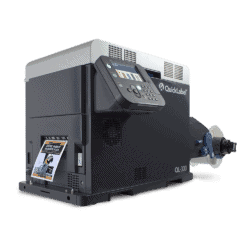 Quick Label QL-300 (120V) Toner CMYK Color Label Printer SKU: 1003-0000002$9,495.00
Quick Label QL-300 (120V) Toner CMYK Color Label Printer SKU: 1003-0000002$9,495.00
FREE SHIPPING over $199*
Orders before 12PM EST usually Ship Same Business Day
Direct Thermal Printing
Direct thermal printing and thermal transfer printing are both methods of printing. In this process, a thermal print head comes into direct contact with thermal paper. The paper contains a special coating that turns black when heated. Text or images are created by applying heat selectively to specific parts of the paper with the print head.
This method is commonly used for applications like receipt printing in retail, shipping labels, and ticket printing at events. It’s fast, efficient, and requires minimal maintenance. The problem with direct thermal prints is that they can fade over time when exposed to heat, light, or moisture, so they aren’t suitable for long-term archiving.
Thermal Transfer Printing
Thermal transfer printing, on the other hand, is a bit more complex but offers greater durability and versatility. In this method, a thermal print head applies heat to a ribbon made of wax, resin, or a combination of both. Transferring ink from a ribbon to a substrate is the process of printing labels and paper substrates.
Labels with long lasting performance, such as barcodes, product packaging, and medical labels, are often produced with thermal transfer printing. The prints are resistant to environmental factors and can endure extended periods without fading or deteriorating. While thermal transfer printers require periodic ribbon replacement, they are the preferred choice for applications where durability is crucial.
Now that we’ve covered the fundamentals of thermal printing, let’s address some common questions and considerations related to choosing the right thermal printer for your needs.
-
 TrojanLabel T2-C Tabletop Volume Press Label Printer SKU: 10000155$33,995.00
TrojanLabel T2-C Tabletop Volume Press Label Printer SKU: 10000155$33,995.00
FREE SHIPPING over $199*
Orders before 12PM EST usually Ship Same Business Day -
 Quick Label QL-120Xe Inkjet Color Label Printer with 1 Year Warranty SKU: 42725300$5,995.00
Quick Label QL-120Xe Inkjet Color Label Printer with 1 Year Warranty SKU: 42725300$5,995.00
FREE SHIPPING over $199*
Orders before 12PM EST usually Ship Same Business Day -
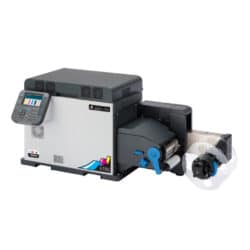 Afinia LT5C CMYK + White Label Printer SKU: 36138$12,495.00
Afinia LT5C CMYK + White Label Printer SKU: 36138$12,495.00
FREE SHIPPING over $199*
Orders before 12PM EST usually Ship Same Business Day
FAQs – Selecting Your Thermal Printer by Model
Mobile Thermal Printers
What are Mobile Thermal Printers?
A mobile thermal printer is a compact, portable printing device designed for printing while on-the-go. People who need to print receipts or labels outside the office often use them, including delivery drivers and field service technicians.
Why Choose a Mobile Thermal Printer?
Mobile thermal printers offer convenience and flexibility, allowing users to print documents and labels at the point of need. For businesses with mobile workers, they are a versatile choice since they are compatible with smartphones, tablets, and laptops.
Desktop Thermal Printers
What are Desktop Thermal Printers?
The desktop thermal printer is a small, compact printer that is designed for use on a desk or countertop. They are commonly used in retail settings, offices, and small businesses for tasks like printing labels, receipts, and barcodes.
Why Choose a Desktop Thermal Printer?
Desktop thermal printers are cost-effective and easy to set up. They are ideal for businesses with moderate printing needs and limited space.
Industrial Thermal Printers
What are Industrial Thermal Printers?
Industrial thermal printers are heavy-duty machines designed for high-volume printing in industrial and manufacturing environments. Labels, tags, and signage are often printed on these machines because they are built to withstand demanding conditions.
Why Choose an Industrial Thermal Printer?
Durability and reliability are exceptional characteristics of industrial thermal printers. They can handle continuous printing and are suitable for applications that require rugged equipment.
What is the Difference Between Inkjet and Thermal Printers?
Let’s compare thermal printers with inkjet printers now that we’ve covered thermal printers in detail.
Inkjet Printers
Using an inkjet printer, liquid ink is sprayed onto paper to produce images and text. Printing with an inkjet printer differs greatly from printing with a thermal printer in the following ways:
- Ink Usage: Inkjet printers consume ink cartridges, which need to be replaced regularly. A thermal printer uses a thermal ribbon or direct thermal paper, so no ink is needed.
- Print Quality: Inkjet printers are capable of producing high-quality colored prints, but thermal printers provide sharp, monochrome prints free of smudging.
- Speed: Thermal printers tend to be faster than inkjet printers. Since they are intended for high-volume printing, they make more sense for large offices.
- Maintain: Since inkjet printers require ink cartridge replacements and ink smudging issues, they require more maintenance than other printers.
Thermal Printers
Images and text are created using heat in thermal printers, as discussed earlier. Here are some advantages of thermal printers over inkjet printers:
- Cost-Efficiency: Compared with other printing methods, thermal printing usually costs less over the long term.
- Durability: Due to their resistance to fading and environmental factors, thermal prints are ideal for applications that demand durability.
- Speed: Thermal printers are faster and more efficient for tasks like receipt printing and label creation.
- Simplicity: Thermal printers have fewer moving parts and require less maintenance.
Are Thermal Printers Worth It?
In conclusion, thermal printers are a valuable and efficient printing technology with a wide range of applications. A thermal printer is a cost-effective, fast, and efficient way to print receipts, labels, barcodes, or tickets. Your particular needs for durability and longevity will determine whether you should use direct thermal or thermal transfer printing.
When deciding whether thermal printers are worth it for your business, consider factors such as your printing volume, the environment in which the printer will be used, and your long-term printing requirements. It is true that it may be more expensive to purchase a thermal printer initially than an inkjet printer, but they often have a lower lifetime cost in ink and maintenance when compared to their inkjet counterparts.
If you’re looking for more information about thermal printers or want to buy an inkjet printer, feel free to contact TCS Digital Solutions. You can rely on our team of experts to assist you in choosing the right thermal printer model based on your specific needs.
Here, we’ve discussed thermal printers’ benefits, how a thermal printer works, and how they differ from traditional printers. As part of our comparison of thermal printers and inkjet printers, we have also outlined the pros and cons of each. So, whether you’re a small business owner, a retail manager, or someone curious about the inner workings of technology, you now have a better understanding of how thermal printers operate and why they are a worthwhile choice for various applications.


